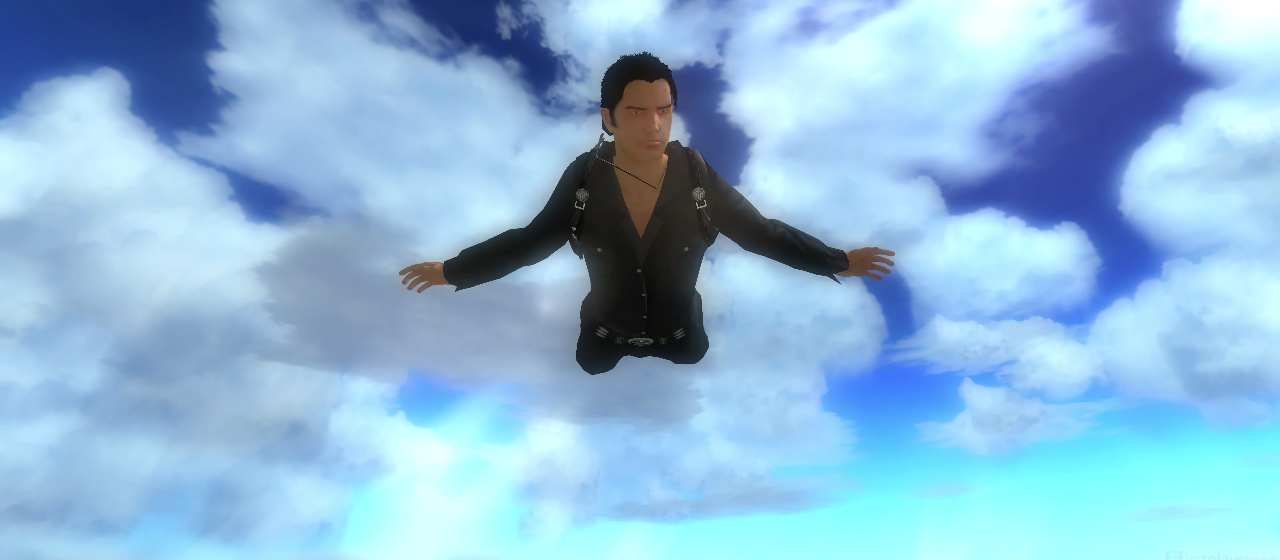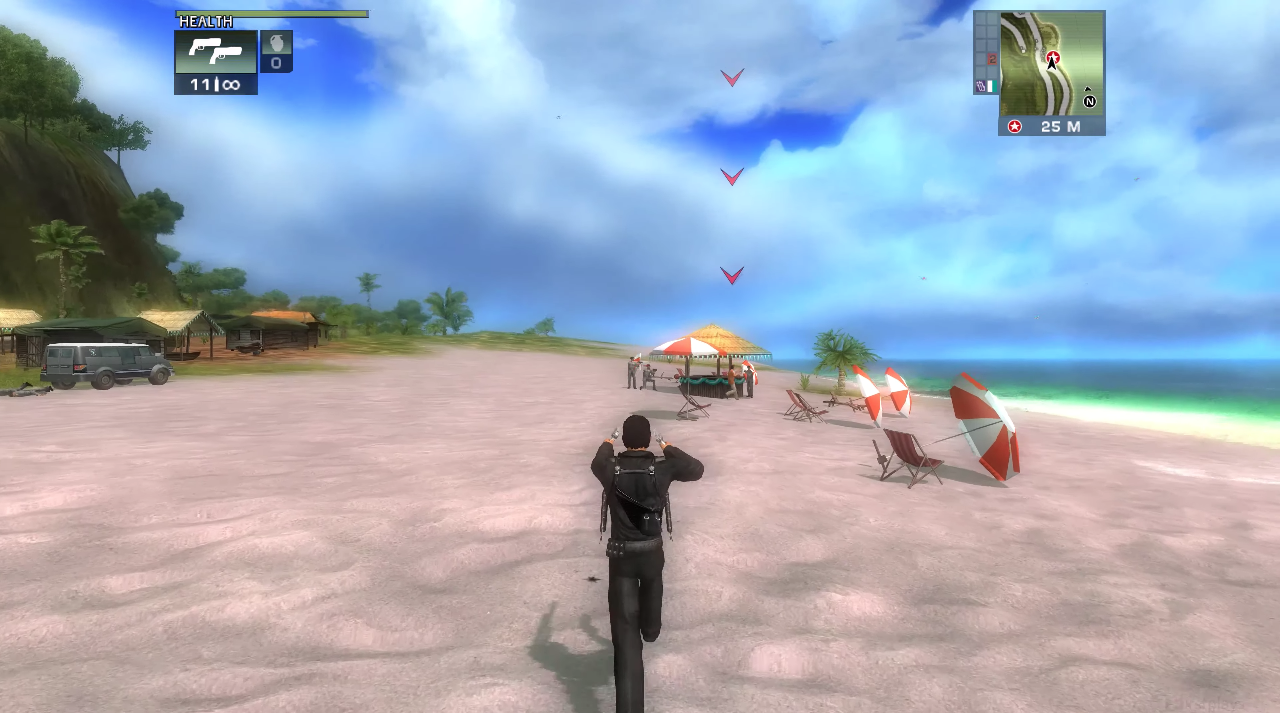

“You see what happens when you make me angry?”
Sorry, I’m just not a big fan of glorified demos. All too often developers think bigger than their budgets and we end up with products that have some characteristics of an expansive game while lacking crucial elements to flesh that game out. Just Cause is an unfortunate example of this trend, albeit partially excusable as it was developer Avalanche Studios’ first game. It has a very large map that is completely available to explore from the moment you start the game, but aside from a very short and fun story mode, the remaining tasks are very bland and repetitive. The appeal of the game lies in its break from realism, distinguishing it from the many Grand Theft Auto clones as something with a bit more of an arcade feel. While you tote around machine guns and rocket launchers and fling plentiful grenades at henchmen and government forces like any old third person shooter (it especially calls Mercenaries to mind), you can also grapple onto moving vehicles, acrobatically maneuver between them, and use a parachute/glider to effectively eject yourself from them. You can fly planes and helicopters and drive boats and four wheelers and motorcycles. It’s a decently fun shell of a game, but the sandbox isn’t lively enough to remain engaging for more than a few hours. It looks good from afar, but the details aren’t up to snuff.
On paper, Just Cause has the elements of a perfectly adequate sandbox game. Large map, multitudinous side quests, flavorful locales, a mix of cities and rural areas, lots of vehicles, plenty of weapons, etc. But the longer you play the game, the more shallow you realize it is. The main story is only interesting due to the cutscenes, as the missions are very generic. The side quests are likewise copy-pasta. And the cool mechanics with parachutes and airplanes are not really integrated into the mission structures. For instance, you may think that you’ll enjoy laying waste to government compounds in the side missions via flyovers with the rocket-equipped choppers; but then you realize that you have to get very close to said compound to speak to the rebel and activate the mission, and by the time you’re back in the air, the anti-aircraft turrets will have shot you down. Sure, you could go through the compound covertly and destroy the turrets preemptively, but then you might as well activate the mission and just finish it then and there. There is some limited leeway in deciding how to tackle a given mission though. My favorite method of taking out a target in a vehicle was to hijack said vehicle, then drive it off of a cliff and parachute out at the last minute.

The over-the-top theatrics are aided by a lock-on aiming system that makes it nearly impossible to get outgunned in a firefight. This excessive heroism is necessary to propel the pulpy story, which sees player-character Rico Rodriguez sticking his nose into a Caribbean civil war, culminating in a skydiving operation wherein you stick timed C4 onto the back of a dictator before parachuting to safety. The cutscenes were the best part of the game, and greatly needed to distinguish the similar missions from one another. It has a nice B-movie feel to it.
Half the point of playing games like this is to explore the non-story aspects of the game. In this regard, Just Cause is barely more than pointless. Collectibles are strewn across the map, marked by blue dots and “hidden” mostly in plain sight. The vehicle controls, passable for a third person shooter, do not suit themselves to the handful of race challenges available to the player (it’s also incredibly annoying that most of the races take place on heavily trafficked streets and the other drivers choose not to use headlights while driving at night and some of them will deliberately try to wreck you). But the real letdown is the “side missions,” of which there are probably over a hundred. They’re all just variations on one of a handful of types, with no backstory for any of them. You just walk up to the quest giver, activate the mission, and then bad guys spawn right next to you, intense music plays, and you’re doing the same thing again. These missions ostensibly build trust with various factions, which gives you access to new safehouses, which give you new places to save your game, and unlock new weapons and vehicles. But most of that is just distraction because none of it is needed to complete the game. Essentially, the point of playing the game becomes to “liberate” the map, which is simply not an engaging experience.

The most unique elements in Just Cause are the grappling and vehicle stunts. But they weren’t fine-tuned to the necessary degree. Why can’t I grapple onto a roof? Why only vehicles? It’s invigorating to skydive and realize the massive scale of the game, to shoot a police officer and then steal the back-up helicopter by grappling up to it. Those elements, in isolation, were fun innovations. But those moments have nothing to tie them to the rest of the game; they’re entirely self-orchestrated. Having partially played through Just Cause 2 prior to experiencing Just Cause, I am perhaps a bit spoiled because I know these things were given more attention and are much more fun in the sequel.
And so while I appreciate Just Cause as a springboard for Avalanche Studios, who were making their first game, I can’t help but view it as anything more than a proof of concept for a burgeoning development team. The structure is solid, and there are enough things to do, but those things are too similar to one another—the exact same, in many cases. Games such as this one, with large, open worlds, need unique content to make them worth the time investment. The military choppers hovering overhead and the watercraft and the parachute and the moody Spanish guitar soundtrack are all cool ideas, but they just don’t come together to make an engaging experience. The sandbox can’t be the final experience, there needs to fun toys to play with. Just Cause is a good demo, but not worthy of the dozens of hours that the repetitive content demands.